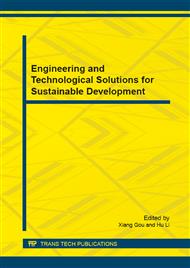[1]
G.D. Kang, Y. m. Cao, Application and modification of poly(vinylidene fluoride) (PVDF) membranes-A review, Journal of Membrane Science, 463(2014)145-165.
DOI: 10.1016/j.memsci.2014.03.055
Google Scholar
[2]
H.Q. Liang, Q.Y. Wu, L.S. Wan, X.J. Huang, Z.K. Xu, Polar polymer membranes via thermally induced phase separation using a universal crystallizable diluent, Journal of Membrane Science, 446(2013)482-491.
DOI: 10.1016/j.memsci.2013.07.008
Google Scholar
[3]
Ji GL, Zhu LP, Zhu BK, Zhang CF, Xu YY. Structure formation and characterization of PVDF hollow fiber membrane prepared via TIPS with diluent mixture. Journal of Membrane Science, 319(2008) 264-270.
DOI: 10.1016/j.memsci.2008.03.043
Google Scholar
[4]
J. A. Yang, X. L. Wang, Y. Tian, Y. K. Lin, F. Tian. Morphologies and crystalline forms of polyvinylidene fluoride membranes prepared in different diluents by thermally induced phase separation. J Polym Sci Pt B-Polym Phys. 48(2010)2468-75.
DOI: 10.1002/polb.22145
Google Scholar
[5]
R.D. Noble, D.L. Gin, Perspective on ionic liquids and ionic liquid membranes, Journal of Membrane Science, 369(2011)1-4.
DOI: 10.1016/j.memsci.2010.11.075
Google Scholar
[6]
A. Dahi, K. Fatyeyeva, D. Langevin, C. Chappey, S. P. Rogalsky, O.P. Tarasyuk, A. Benamor, S. Marais, Supported ionic liquid membranes for water and volatile organic compounds separation: Sorption and permeation properties, Journal of Membrane Science, 458(2014).
DOI: 10.1016/j.memsci.2014.01.031
Google Scholar
[7]
Earle M J, Esperanca J M, Gilea M A. The distillation and volatility of ionic liquids. Nature, 439(2006)831-834.
Google Scholar
[8]
V.R. Ferro, E. Ruiz, J. de Riva, J. Palomar, Introducing process simulation in ionic liquids design/selection for separation processes based on operational and economic criteria through the example of their regeneration, Separation and Purification Technology, 97(2012).
DOI: 10.1016/j.seppur.2012.02.026
Google Scholar
[9]
N.S. Brisinski, O. Höfft, F. Endres, Plasma electrochemistry in ionic liquids: from silver to silicon nanoparticles, Journal of Molecular Liquids, 192(2014)59-66.
DOI: 10.1016/j.molliq.2013.09.017
Google Scholar
[10]
T. Selvam, A. Machoke, W. Schwieger, Supported ionic liquids on non-porous and porous inorganic materials—A topical review, Applied Catalysis A: General, 445–446(2012) 92-101.
DOI: 10.1016/j.apcata.2012.08.007
Google Scholar
[11]
F.M. Shi, Y.X. Ma, J. Ma, P.P. Wang, W.X. Sun, Preparation and characterization of PVDF/TiO2 hybrid membranes with different dosage of nano-TiO2, Journal of Membrane Science, 389(2012)522-531.
DOI: 10.1016/j.memsci.2011.11.022
Google Scholar


